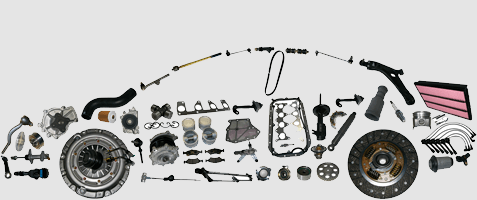Whether drivers would agree or not, stopping the vehicle in time is more important than accelerating to thrilling speeds. All the components including the automotive brake shoes and brake pads ensure the safety of the passengers.
Brake pads are an essential part of the braking mechanism; they apply the required pressure and consequently cause friction on the brake rotors, which in turn, makes the car stop. Their surface is attached with a friction-based material. The friction surface is faced towards the rotor; two brake pads are positioned in the brake caliper. The caliper clamps the brakes pads onto the rotor when the brakes are applied. The car deaccelerates as per the pressure applied to the brakes. Running the car with worn our brake pads might affect the wheels, thereby damaging the braking system. You can simply rely on reputed friction product manufacturers like ASK Automotive. However, read on if you want to know more:
- Semi-Metallic
Semi-metallic brake pads are made up of 30% to 65% metal and are the most common type. The rest of the composition includes copper, wire, steel wool and other things. These elements are then cohered with organic resin. Then they are molded in the desired shapes prior to being baked in a furnace to make them durable. This type of pad is heat resistant and are easily compatible with rotors. When 60% or more metal is present in the pads, they are cheap. This type is commonly used in race cars that can reach high speeds within seconds. However, they don’t react well to very low temperatures.
- Ceramic
The supercar segment is most likely to be fitted with ceramic brake pads. They are quite expensive since they offer excellent braking as well as absorb high amounts of heat generated by sudden braking. The fill materials include ceramic fibers, which make them the quietest and the cleanest brake pads. Moreover, they last long and offer better performance as compared to organic pads. However, they take longer than usual to reach the optimum operating temperature. For this reason, they are better for professional rallying purposes as opposed to for running routine errands.
- Non-asbestos Organic
These brake pads are manufactured from organic materials. Previously, asbestos was commonly used to manufacture brake pads, but was rendered obsolete since it emitted harmful substances that caused health and safety issues. The newer versions of non-asbestos organic compounds include rubber, Kevlar, fiber glass, and cellulose. This type is perfect for day-to-day road driving.
Which one should you choose?
Most automotive components such as three-wheeler clutch plate or car brakes pads are better left to the expertise of professionals. The common rule is to use organic brake pads for small, lighter vehicles since they can manage stopping these vehicles easily without creating too much noise. Middle sized cars need some more stopping power, which is low metallic NAO brake pads are better suited. Finally, supercars and racing cars require semi-metallic or ceramic brake pads.

